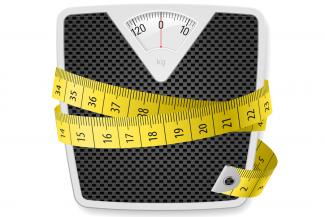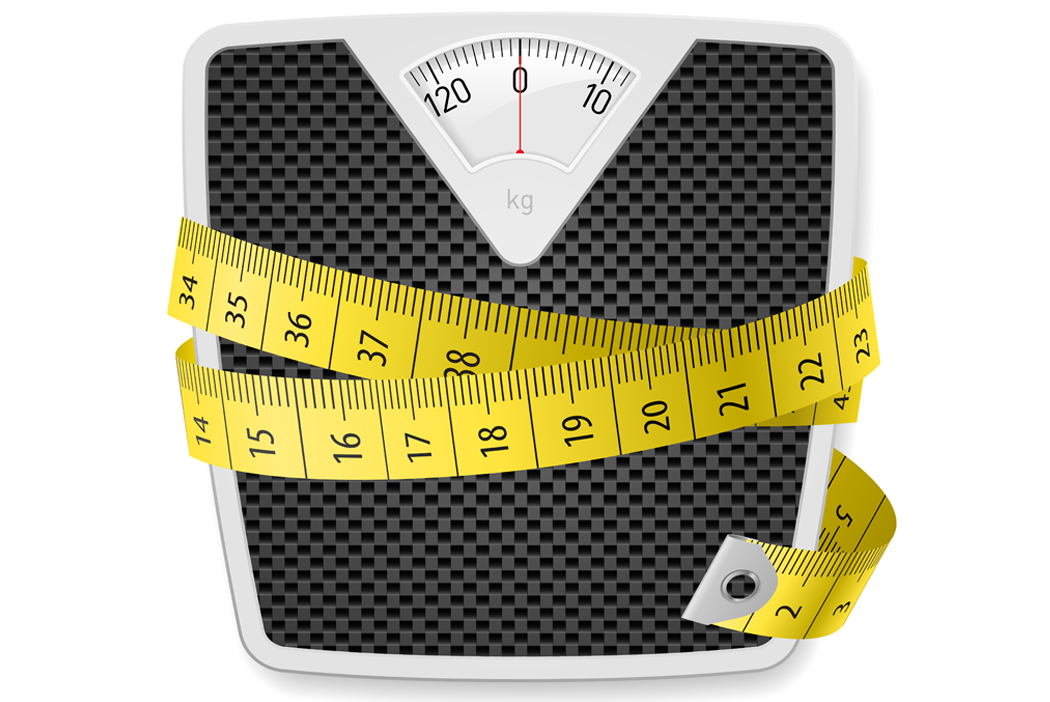
Your size is not a matter of perception but a mathematical fact that you can calculate, says Dr Gita Mathai.
What are the commonly used parameters?
The BMI (Body Mass Index) is easily measured. It is weight (in kg) divided by height (in meters) squared.
| BMI | Weight Status |
| Below 18.5 | Underweight |
| 18.5 – 23.9 | Normal |
| 24.0 – 29.9 | Overweight |
| 30.0 and Above | Obese |
BMI has some limitations. If it is calculated for adults who are very muscular, or very thin, they may fall erroneously into the healthy category. The value is also not reliable in very short adults or pregnant women.
Can BMI be used in children? Children should be double the birth weight at the end of the fifth month and triple at the end of the first year. The weight gain in the 2nd year is much less, 2-3 kg if you are lucky. After that till the age of 10 the formula (age+3) X5 gives the weight in pounds. The BMI can also be calculated in children after the age of two. The value has to be read off charts. These are available with paediatricians. Any child over the 95th percentile is obese.
The waist:hip ratio can be measured to determine the health status . The normal value is less than .85 for women and less than .90 for men.
The waist circumference alone can be measured. In women, a waist circumference greater than 35 inches, and in men a waist circumference of greater than 40 inches is considered dangerous.

Apple or pear – what’s the difference?
Overweight individuals may have subcutaneous fat uniformly distributed all over the body, or mainly a paunch with the fat concentrated in the stomach area. An apple-shaped body with a big stomach is more dangerous than a pear-shaped body with big hips. Subcutaneous fat is present all over the body under the skin. Visceral fat is in the abdomen and around the organs. A person with subcutaneous as opposed to visceral fat can have a high BMI and still fall within the healthy range for the waist:hip ratio.
What about weight loss supplements and medicines? The media is inundated with advertisements for “natural” supplements for weight loss. Many are illustrated with before and after photographs. Some may be natural, but most are photoshopped with lighting and lenses to obtain the desired effect.
Some natural supplements contain thyroid hormones, but in the unpurified natural form. It is often derived from animal sources. The content and dosage is not regulated and dangerous side effects due to over dosage can occur. Also it is not safe for a person who is not hypothyroid to take supplements of thyroid tablets. Weight loss does occur but is at the expense of the body’s metabolism. Sometimes the pills contain small doses of ephedrine from plant sources. This also increases the metabolism, heart rate and produces weight loss.
The only allopathic medicines that can be ethically prescribed for weight loss are diethylpropion, orlistat, lorcaserin, phentermine, benzphetamine, phendimetrazine. They too have side effects and can affect the liver, lungs and heart. They are approved for use only for three months. They help to produce initial dramatic weight loss until the effects of diet and exercise kick in. They cannot be used if there are other coexistent illnesses like heart disease, high blood pressure, liver or lung disease.
What’s the best diet?
Many fad diets and powders are advertised on the market. Sometimes these are shakes mixed with water and substituted for meals. These shakes are expensive. Once the diet is discontinued, the weight slowly creeps up again.
Other diets totally avoid a constituent of the food pyramid like carbohydrates or fats. The long-term consequences of such dietary restrictions have been known to adversely affect the body depriving it of essential nutrients.
Weight is an equation between calories consumed and calories spent. The more you eat (even frequent binges) and the less you move, the more you will weigh. What you put in is what is seen.
Sometimes the increase is very gradual - an imperceptible kilo a month. But remember, that means 12 kilos at the end of the year!
To lose weight you have to reduce the calories consumed. Not with fad diets or supplements, but just by reducing what you usually eat by 25%. This means 1 ½ chappatis instead of two, ¾ a cup of rice etc. An easy way to do this is to eat on a quarter plate. Eat only what fits on the plate and do not go for refills. To lose weight you need to eat around 1500 calories a day, and then work off 400-500 of it.
Say NO to empty calories, colas, crisps, fried snacks and sweets.
If you feel hungry, a salad or a fruit is a healthy alternative.
And diet goes hand in hand with exercise. Exercise regularly. An hour of intense aerobic activity like jogging, running, swimming , cycling will expend between 300-600 calories an hour depending on your initial weight and the intensity of your effort. The most effective and efficient is stair climbing, an incredible 1100 calories per hour!
Keep track of the numbers
Most people underestimate their calories and overestimate the exercise. A scientific way to overcome this problem is to note down all food eaten in a diary and balance it against exercise.
Numbers do not lie!






